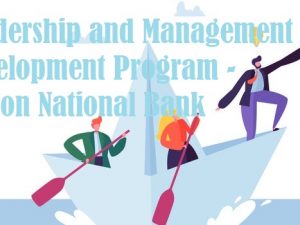| Preview |
EXECUTIVE SUMMARY
Most of the famous apparel retailers in the developed countries have outsourced their most important business processes such as manufacturing and designing to the developing countries to make the products relatively at a low cost and to avoid the administrative and personnel management complications of the production. This study was focused on addressing the current strengths, opportunities, weaknesses and threats of the apparel sector. Further, the study provided the recommendations for organizations which are involved in apparel outsourcing. It will help these organizations to adhere to the new dynamic and challenging business environment and face the upcoming issues and win the competition. One on one discussion were conducted with the employees of Hela Clothing and received information on the opportunities and challenge that they have come across as an individual organization as well as a unit of apparel industry of Sri Lanka.
1. INTRODUCTION
Sri Lanka is one of the countries which is famous for its quality apparel all around the world. Most of the world renown brands such as Tommy Hilfiger, Levi’s, Addidas, etc import apparel from Sri Lankan factories after giving them bulk orders. These garments are mostly being sold in USA and European markets. Income attained by exporting apparel plays a major part in Sri Lanka’s economy as well as to calculate its gross domestic product (GDP).
The demand for the apparel manufactured in Sri Lanka has grown rapidly during the past few decades. Sri Lanka has become one of the main textile exporters to the US and Western countries such as Italy, UK, Germany, Australia etc. Not only Western countries, Middle East countries such as United Arab Emirates have become one of the largest apparel buyer of Sri Lanka.
According to Export Development Board (2017), Textile exporting has become one of the greatest contributions to the economy of Sri Lanka. Apparel Industry has showed a rapid growth during the past few years, becoming the country’s main earner of foreign exchange which is more than 50% from industrial exports.
Hela, a Sri Lankan based company, headquartered with more than USD two hundred million of worth. The company is primarily focusing on manufacturing, innovating and designing of apparel. The company owns twelve factories in four jurisdictions and has an approximate work force of 15,000 employees. Hela drives sustainable and ethical working surroundings across the countries which they operate in, and provide quality solutions in a wide range of apparel namely intimate wear, sleep wear and casual wear to the world renown leading European and US brands.
2. BENEFITS OF THE APPAREL INDUSTRY OF SRI LANKA
Sri Lanka is well known as a quality garment supplier in the world. Further, the ethical garment practices have taken Sri Lankan garment industry a long way. Sri Lankan apparel labors receive attractive pay and benefits packages with international standard working conditions. The waste management and environmental friendly business processes adapted by Sri Lankan textile companies provides a great competitive advantage in the global context. The image of Sri Lanka for having excellent labor protection and ethical labor practices is a great plus point in differentiating and promoting the “Made in Sri Lanka” brand. The span of apparel categories provided by Sri Lankan companies is incredibly wide. Ex- Sports wear, lingerie, swim wear, bridal wear, work wear etc. This wide range of products provides the opportunity to differentiate and be innovative in clothing design and manufacturing. The amount of resources which Sri Lanka owns has provided a great opportunity in the global market. The availability of innovation centers, research and development centers, etc provides benefits for apparel manufacturers to provide more quality and innovative products to the customers. This has provided the opportunity to the three main apparel industry players of Sri Lanka to be in the top 50 apparel solution providers in the world. Embuldeniya (2015),
Further, a large number of Asian and western suppliers of apparel fabric have stored their fabric stocks in Sri Lanka to support the easy access, clearance and regional shipping. This has become a great advantage for Sri Lanka as the industry was suffering slow process of raw material purchasing in the past few decades. The United States and United Kingdom has been the largest apparel buyer of Sri Lanka. The worth of the partnership between two countries is worth more than 2.5 billion USD which is continuously growing with harmonious collaboration. Apparel companies of Sri Lanka provide over 600,000 employment opportunities for unemployed people who are suffering from poverty and also for the highly qualified professional graduates of the leading universities of the country. Since most of the South Asian countries are involved in outsourced apparel manufacturing, Sri Lanka has the regional advantage of using the regional supply chain. Sri Lanka is also benefited from its’ strategically sound business friendly environment and geographical location. Investors of Sri Lankan apparel industry also benefited from the strategic advantage of the shipping and logistic procedures with the support of Sri Lankan government. Since most of the textile companies are focusing on innovation based fashion designing and garment manufacturing, Sri Lanka has the opportunity to distinguish ‘Made in Sri Lanka’ brand with superior quality and creativity. Sri Lanka Export Development Board (2017)
|





